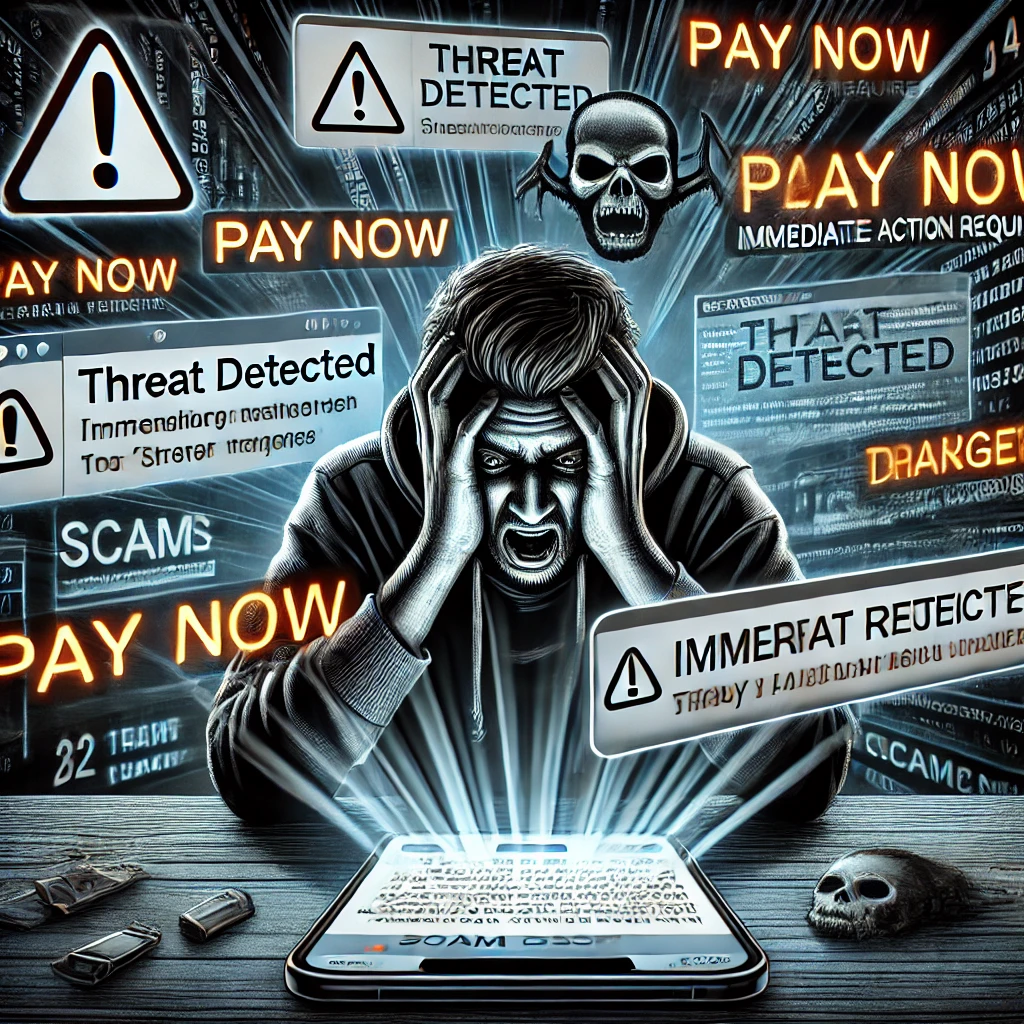Summary: In recent years, scammers have intensified their tactics, using extreme fear to manipulate victims into sending money. These scams often involve personalized details, such as addresses or photos of the victim’s home. They may include disturbing videos or messages that threaten harm to the victim or loved ones. By leveraging public data, scammers make these threats seem real, pushing victims to act out of panic. While these tactics are alarming, there are ways to protect oneself, such as not engaging with messages, reporting scams to authorities, and strengthening digital security with strong passwords and two-factor authentication. Staying calm and informed is essential in navigating these new, more dangerous forms of online fraud.
In the digital era, scammers are no longer content with simple phishing emails or fake charity requests. They now employ extreme fear tactics designed to induce panic and push victims into immediate action, often by threatening harm or disgrace if money is not paid promptly. This new breed of scam leverages a level of personalization and aggression that is both alarming and dangerous, creating visceral scenarios that victims feel they have no choice but to comply with.
One particularly terrifying scam includes a video threat showing a person about to inflict harm on someone, compelling recipients to pay up or face the consequences. This tactic of inciting fear through such graphic imagery represents a disturbing trend, with scammers growing more sophisticated—and more menacing—by the second (Dudzik, 2024).1
The Evolution of Fear-Based Scams
As highlighted by the Electronic Frontier Foundation, modern scammers are increasingly resourceful, often using detailed personal information, such as addresses, names, or even pictures of the victim’s home, to create a sense of inescapable surveillance (Electronic Frontier Foundation, 2024).2 Such tactics, whether through email or messaging platforms, leverage public data breaches or freely available online resources like Google Street View to gain personal information on potential victims, making these scams feel incredibly personal and threatening.
This tactic can also extend to emails where scammers, claiming to be hackers, warn victims of possessing sensitive or compromising material and threaten exposure if a “privacy fee” isn’t paid immediately. Using this tactic, scammers instill a feeling of constant surveillance, convincing victims that their only way to maintain privacy and safety is through payment.
Fear Tactics Taken to the Extreme

One of the most unnerving strategies involves scammers sending videos depicting graphic violence or threats. These videos are designed to shock recipients, making them believe that the scammer has the intent and the means to harm them or someone they care about. Victims often report feeling an overwhelming sense of panic, as scammers make it seem that their only route to safety is to comply with financial demands.
These scams are incredibly unsettling because they prey on human empathy and fear for loved ones. The graphic nature of these messages goes beyond traditional scamming tactics, representing a heightened level of psychological manipulation. Scammers understand that fear can make people act irrationally, which is why these tactics are so effective.
Scammers Are Getting More Dangerous by the Second

What makes these scammers particularly dangerous is their ability to adapt and increase the sophistication of their methods. As people become more aware of traditional scams, such as email phishing, scammers have evolved to use cutting-edge technology to track down and manipulate victims, often deploying fake digital identities that seem alarmingly realistic.
In recent cases, scammers have combined public data with fake hacking claims, alleging that they have compromised the victim’s devices. They sometimes display knowledge of the victim’s browsing history or activities, claiming to have obtained this information through malware. Scammers might even add fake “threat-tracking pixels” in emails, convincing the victim that they are continuously being monitored and leaving them feeling there’s no safe way out but to pay (Electronic Frontier Foundation, 2024).
How to Protect Yourself
As threatening as these messages might seem, there are effective ways to protect yourself. Below are some steps to take if you receive such a message or encounter other similar fear-based scams:
- Stay Calm: Remember, scammers rely on immediate reactions. Take time to breathe and assess the situation rationally.
- Do Not Engage: Never respond to these emails, as any reply could encourage the scammer to target you further. Blocking or marking the email as spam is recommended.
- Verify Claims: Scammers often claim to have sensitive information about you. If they display details about your home or contact information, consider that this could be sourced from public databases or online data breaches. They likely do not possess actual compromising details.
- Report the Scam: Report scams to platforms like the Federal Trade Commission (FTC) in the U.S. or equivalent local agencies. Reporting these incidents can help authorities track and combat scam operations, preventing others from falling victim to the same tactics.
- Strengthen Digital Security: Use strong passwords, enable two-factor authentication, and keep your antivirus software updated. Scammers frequently claim to have accessed devices, so maintaining high security on personal accounts and devices can provide peace of mind.
- Protect Personal Data: Review your online privacy settings to reduce the amount of publicly available information about you. Use services like Have I Been Pwned to check if your data was exposed in a breach, and consider a credit freeze to prevent identity theft.
- Don’t give away any personal information: There was a time when you could give your number to someone and call them if you were looking for a date; it might be wise to start using phone number forwarding.
The Internet provides scammers with unparalleled reach, and as they become more sophisticated, it’s essential to remain vigilant and educated on new scams and protection methods. The methods are evolving daily, so adjust as these criminals get more vicious.
Stay safe, and check out our other links: www.linktr.ee/kmtcminds
Reference
- Dudzik, K. (2024, September 20). Internet scam uses photos of your home: Scammers say they’ll share compromising photos of you with your contacts if you don’t send them Bitcoin. WGRZ. Retrieved from https://www.wgrz.com/article/money/consumer/internet-scam-uses-photos-home/71-2a64c14f-596d-4a1d-9bf5-162b5579daae ↩︎
- Electronic Frontier Foundation. (2024, September 27). New email scam includes pictures of your house. Don’t fall for it. Retrieved from https://www.eff.org/deeplinks/2024/09/new-email-scam-includes-pictures-your-house-dont-fall-it ↩︎






Leave a Reply